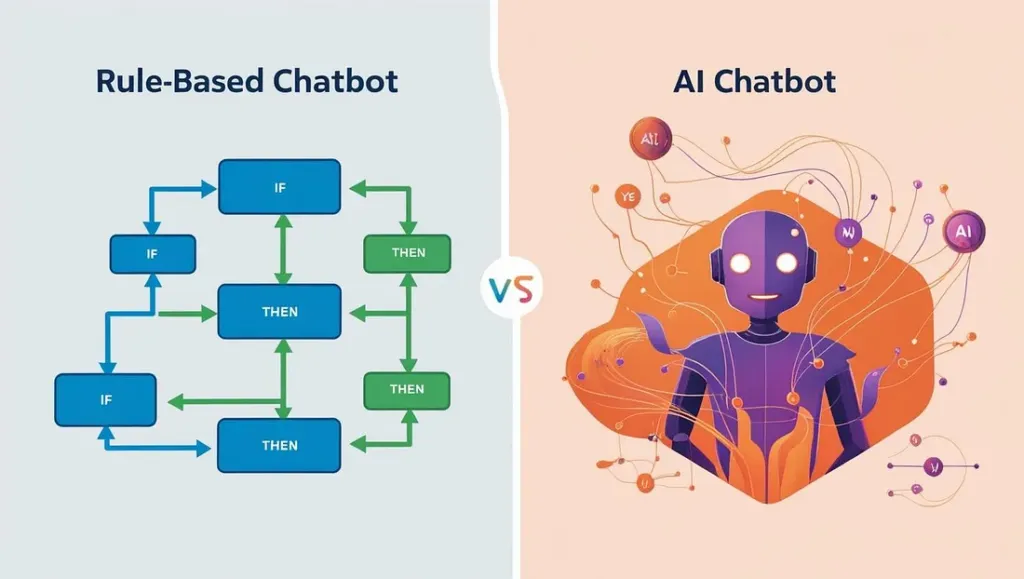In today’s AI world, the word chatbots is been used everywhere. Chats have been an integral part of customer service, marketing, and lead generation for businesses, however not all chatbots are created equally. There are primarily two types: Rule-Based Chatbots and AI-Powered Chatbots. While they serve similar purposes, the way they operate and deliver value is quite different.
Let’s break down the differences, use cases, and how you can leverage this knowledge for your brand’s digital strategy.

What Are Rule-Based Chatbots?
Rule-based chatbots, also known as decision-tree bots, operate strictly within the boundaries of predefined rules and scripts. They rely on a set of programmed rules and decision trees to generate responses based on specific keywords or user inputs.
What Are AI-Powered Chatbots?
AI chatbots, on the other hand, are more advanced and capable of understanding and processing natural language, which makes them more dynamic and adaptable. Unlike rule-based bots, AI chatbots can generate responses to complex or unexpected queries, learning and improving with every interaction.
Comparison Table: Rule-Based vs. AI Chatbots

Which One Should You Choose for Your Business?
The choice between rule-based and AI-powered chatbots ultimately depends on your business’s needs, goals, and resources.
· If you’re looking for a quick, cost-effective solution to handle basic customer support or frequently asked questions, a rule-based chatbot may be the right fit.
· However, if your business requires dynamic interactions, personalized service, or the ability to handle complex queries at scale, investing in an AI-powered chatbot can provide a far superior experience for your customers — and even improve over time with each interaction.
Final Thoughts
Whether you opt for a rule-based chatbot or an AI-powered solution depends on the complexity of your business needs. Rule-based bots may be quick and easy for handling simple tasks, while AI chatbots offer a more sophisticated, adaptive approach that can scale with your business. By understanding these differences, you can make an informed decision and implement a chatbot strategy that enhances your customer interactions and improves operational efficiency.

